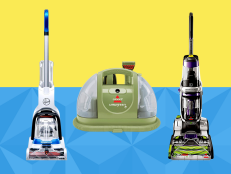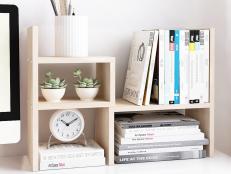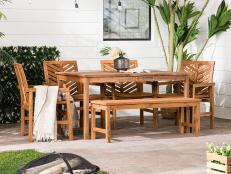Does Potting Soil Go Bad?
Potting soil won’t last forever, in a container or in the bag.

Rustic White Photography
Chances are, you'll probably need to change out your potting soil each year.

You ask your potting soil to do a lot of work for your indoor plants. You expect it to nourish and feed your plants, keeping your begonias blooming and your ferns fronding, season after season. But here’s the scoop on potting soil: It gets worn out after a single season. Here’s why.
Most Potting Mixes Are Peat Moss-Based
Peat holds water and has nutrients that plants love, so most potting mixes have peat as a primary ingredient. Peat-based mixes are cheap to make and since they’re lightweight, easy to bag and sell. The problem is that the peat moss decomposes quickly, faster than other organic materials. So peat-based mixes are made to last one season, at most.
Peat-based potting mixes look great when you pour them out of the bag. They’re rich and loose and black, and they’ve often been enhanced with fertilizer or water-holding crystals so your plant does great in them for a season. But a year later, your plant isn’t thriving. That potting soil is worn out because the peat moss has decomposed. That peat moss can decompose even if you never take it out of the bag. If your potting soil has been sitting in your shed since last year in an opened bag and it's gotten wet, toss it. If it somehow stayed bone dry, it should be OK to use.
Decomposing Potting Mix Is a Problem
As potting soils decompose, bad things happen to your plants:
- The potting soil compresses. It looks like the dirt is settling because there seems to be less of it, but the peat moss is breaking down. As it does, the peat and soil particles pack around the plant's roots and slowly starve them of oxygen. Roots have to breathe. A plant with an aerated root zone is a healthy plant. A plant with roots that can’t breathe is a dead plant.
- The potting soil can’t drain as well. As those soil particles get smaller and pack tighter together, it’s harder for water to drain through the soil and out of the pot. That means the soil will hold water too long and drown your plant’s roots. See above about how roots need to breathe. A plant with well-drained soil is a healthy plant. A plant with soil that’s soggy all the time is a dead plant.
- Salts build up. Poor drainage lets salts from fertilizer accumulate in the soil. This stresses the plant and can burn the roots.
All of this can happen in a single growing season. So it’s no wonder the plant that looked gorgeous and green one summer looks haggard a year later.
Improving That Potting Soil
Do these things to make sure your plants have good dirt.
Repot every single year. This is the easiest and best way to give your plants the good dirt they need to stay healthy. Toss the old potting soil into a flower bed, and refill that pot with fresh potting soil. Make it a spring ritual.
Improve that bagged potting soil. Mix a couple of handfuls of perlite into that peat-based soil mix. It won’t keep the peat from decomposing, but it will keep the soil aerated. Adding some handfuls of compost will enrich it, too.
Flush the soil monthly. Put your plant in the sink, or take it outside, and flush the soil to remove the accumulated fertilizer salts and the mineral deposits from tap water. Run water from the tap or hose into the plant until it runs out the drainage hole in copious amounts.
Make your own potting mix. Everything’s better homemade, including potting soil. Mix up your own with compost, coir, perlite, pumice, worm casings, vermiculite and other soil additives. The exact recipe depends on the type of plant that will be growing in the soil. Homemade potting soil will last two or more seasons, so it’s worth the effort — unless you just like throwing out all your potting soil every year and starting over.















































